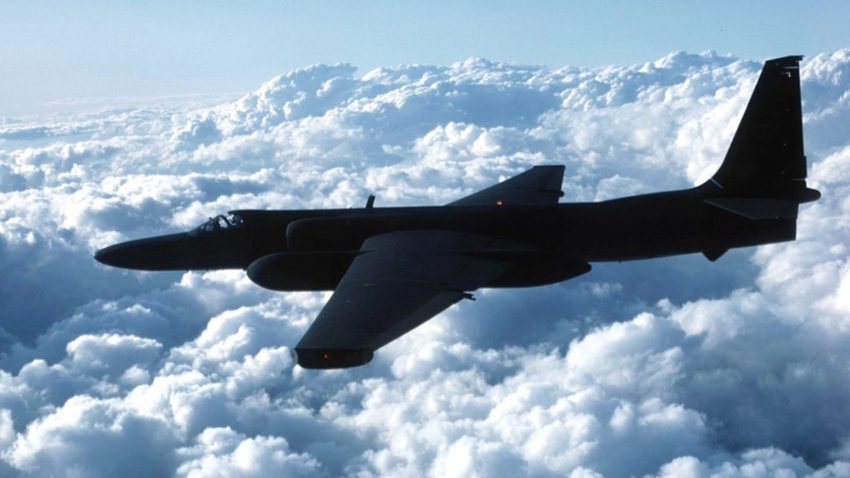“My dad was shot down over the Soviet Union,” Gary says. “As a kid I thought it was normal, everybody’s dad goes through this.”
In the thick of the Cold War an American spy plane flew over Russian missile sites, taking pictures for the CIA.
The US thought that at 70,000 feet their U-2 aircraft was beyond the reach of Soviet air defences. They were wrong.
What resulted from the downing of the U-2 plane and the capture of pilot Francis Gary Powers was an international incident that could have led to nuclear war.
Sixty-five years later, with conflicts raging in Ukraine, Gaza and elsewhere, militaries around the world still gather intelligence in a game of espionage cat-and-mouse. Could something similar happen again?
What happened on 1 May, 1960?
Wanting to know what missile capabilities the Soviets had, President Dwight D Eisenhower authorised a series of flights by U-2 spy planes over modern-day Russia.
“As the United States saw it, although they knew that the overflight of Soviet territory was against international law, they regarded their activity as taking a peek behind the Iron Curtain in order to get an idea of Soviet preparedness,” says Sean Rehling, a curator at the Imperial War Museum in Duxford.
Powers was flying near Sverdlovsk when his U-2 aircraft was brought down by a Soviet missile. He was able to parachute to safety, but was captured.
The Americans, not knowing yet that Powers was still alive, claimed that a weather research aircraft had strayed into Soviet territory. So when Soviet premier Nikita Khrushchev announced that a US pilot had been captured they were caught in a lie.
Powers was put on a public show trial and sentenced to prison, but was released in 1962 in exchange for Soviet spy, Rudolf Abel.
Rehling says the U-2 incident ratcheted up tensions between the US and the USSR, and perhaps emboldened Khrushchev to pursue a bold, risky diplomacy that led to the crisis point when Soviet missiles were deployed to Cuba.
“We see the culmination of this when, almost two half years later in the Cuban Missile Crisis, the Soviet Union appeared to be adopting a much more confrontational attitude to the United States.
“The world became step by step this gradually more dangerous place”
‘I wanted to find out the truth’
“My father was very controversial when he returned home,” his son Gary, 59, tells Sky News. “Was he a hero, was he a traitor? Did he defect?”
Released on a bridge in Berlin one cold, foggy morning, Powers was taken back to the US where he was questioned first by the CIA, and then by a Senate committee. He was cleared by both.
Learning about what happened growing up, Gary pestered his dad for details of the incident.
“How high were you flying on 1 May?,” he would ask. “Gary, I can’t tell you that,” his father would reply.
Powers died in 1977, aged 47. Despite being officially cleared of any wrongdoing, he’s never quite able to shake the questions about what happened.
His son never stopped wondering about the U-2 incident. “I wanted to find out the truth of what he went through,” Gary says.
He founded The Cold War Museum in Virginia in 1996 and regularly runs tours about espionage history, which of course includes the U-2 incident involving his father.
Read more from Sky News:
The political novice elected by Canadian voters
What Sky News witnessed at Pope’s funeral
Is the U-2 incident still relevant in 2025?
It may be more than six decades since 1 May, 1960, but the lessons of the U-2 incident still resonate today.
NATO fighter jets are regularly scrambled to respond to Russian spy planes approaching the alliance’s borders, while Western surveillance planes operate over the Black Sea, gathering intelligence for Ukraine.
“Even though Power’s aircraft was shot down 65 years ago, the world in which we live is a legacy of the Cold War,” Rehling says.
“Today, even though nations might not necessarily know who a potential adversary or enemy may be, gathering intelligence is just as important as it was during the Cold War.”
Gary argues that the U-2 incident is still relevant, mirrored in the geopolitical jostling between NATO, the US, Russia and China.
“It’s a cat-and-mouse game, trying to find out what the other side is doing and not getting caught doing it.”






